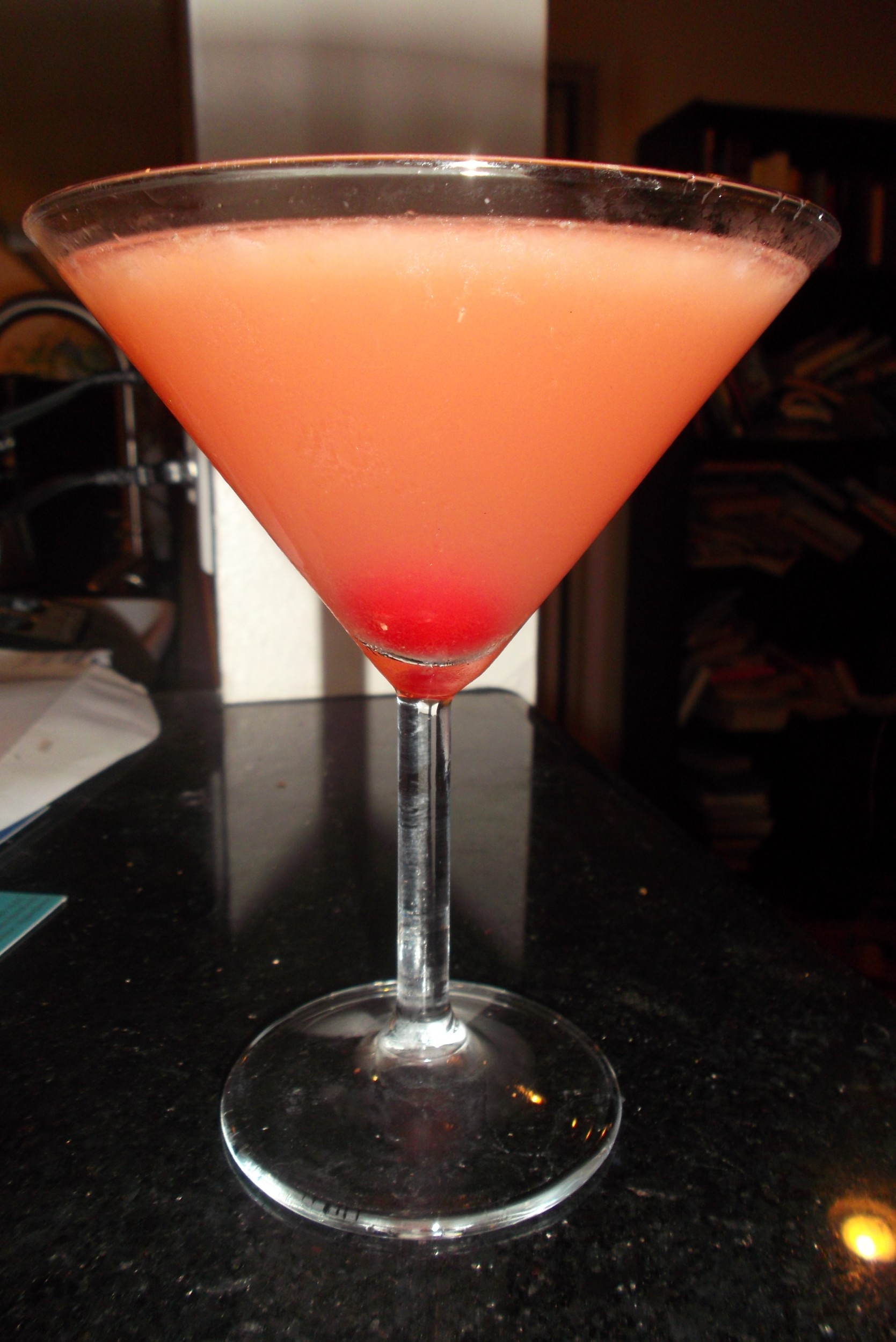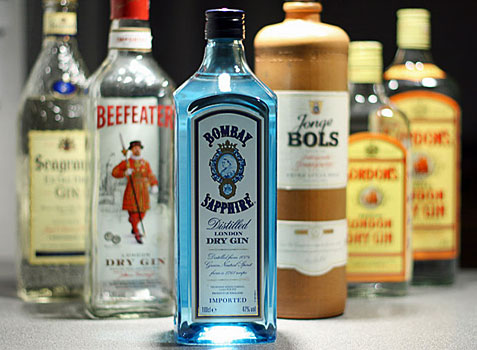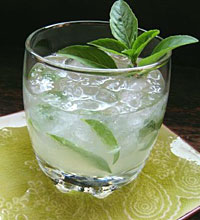Drink of the Week: Ward No. 5 (TCM Fest Salute #4)
 You can make a case that the final drink inspired by some of the best films I was lucky enough to see at this year’s TCM Classic Film Festival is easily the best of the batch — the rest of which you can see for yourself here, here, and here. I wouldn’t say, however, that it’s worthy of the film that inspired it. That’s only because the movie that inspired is so stratospherically its own thing that it stands out among other film classics. If I had to make a choice, I’d much rather you saw the movie than tried my drink. Fortunately, however, there’s no reason you can’t do both!
You can make a case that the final drink inspired by some of the best films I was lucky enough to see at this year’s TCM Classic Film Festival is easily the best of the batch — the rest of which you can see for yourself here, here, and here. I wouldn’t say, however, that it’s worthy of the film that inspired it. That’s only because the movie that inspired is so stratospherically its own thing that it stands out among other film classics. If I had to make a choice, I’d much rather you saw the movie than tried my drink. Fortunately, however, there’s no reason you can’t do both!
You can read a little bit about my impressions of “A Matter of Life and Death” from five years back in my review of a DVD set, “The Films of Michael Powell” (fortunately still available from Amazon for a reasonable price, and also as a DVD rental from Netflix). Suffice it to say the film was the personal favorite of an English filmmaker who was every bit the equal of such contemporaries as Alfred Hitchcock and David Lean. He famously befriended Martin Scorsese and married his editor, Thelma Schoonmaker, but his latter day influence extends far beyond that. The important thing is that he made film as a form of healing magic with a dash of wry, realistic humanism that was witty, occasionally sensual (but not quite sensuous), and nearly always as British as British could be — but he did so with the help of a brilliant WWII-era expat Hungarian screenwriter/producer named Emeric Pressburger.
In “A Matter of Life and Death” (alternately titled “Stairway to Heaven,” way pre-Led Zeppelin), a young poet and war-hero (David Niven) who really should have perished along with his plane, finds himself very literally on trial for his life and his love of a American radio operator (Kim Hunter) while undergoing post WWII-era neurosurgery. It all happens in Ward No. 5 and I thought that would be a fine name for a drink that revives the mind and the soul and won’t be too horrific for the body, either.
Ward No. 5
1 1/2 ounces Bombay Dry Gin
3/4 ounce fresh squeezed orange juice
3/4 ounce fresh squeezed lemon juice
3/4 ounce ginger liqueur (Dekuyper Mixologist Collection Ginger)
1 teaspoon grenadine (Master of Mixes)
1 pitted cherry (garnish)
Combine the liquid ingredients in a cocktail shaker, shake vigorously, and strain into a good size cocktail glass. Toast life, but also death — without one, you can’t really have the other.
****
Cocktail enthusiasts may suss out that this drink is a slight variation on the very coincidentally named Ward 8, a lesser known classic-era cocktail — a mite tart for my taste — that I covered back in ’11. I’ve replaced the North American whiskey of the original for supremely English gin but kept the life-giving fresh citrus juices. Shaving off half an ounce of hard booze, I’ve also added the healthy properties of ginger…okay, ginger liqueur, but the alcohol is needed to salve the mind, right?
It’s a refreshing concoction but fairly sensitive and delicate. I tried changing out the Bombay Dry Gin for a very good but more elaborately flavorful gin and it throw the balance off in a way I wasn’t sure about. I also tried the drink with only 1/2 an ounce each of the orange and lemon juices and that result let a bit more of the gin’s perfume through.
I went with a more refreshing and accessible take on Ward No. 5. I don’t know what effect using a different brand of ginger liqueur would have on this drink because I only had one around, but the brand I’m using is very tasty. I’m not saying that only because I got it free, though freebies always do taste that much sweeter.
All in all, in rather proud of Ward No. 5, but I’m humbled by the beautiful, funny and tragically delightful movie that inspired it. I’m also rather happy to present the scene that gave me the idea for this final TCM-esque beverage.
You can follow us on Twitter and Facebook for content updates. Also, sign up for our email list for weekly updates and check us out on Google+ as well.
Posted in: Food & Drink, Lifestyle, Movies, Vices
Tags: A Matter of Life and Death, Bombay Dry Gin, cocktails, David Niven, Dekuyper Mixologist Collection Ginger, Drink of the Week, Emeric Pressburger, Happy Hour, Kim Hunter, Master of Mixes Grenadine, Michael Powell, Roger Livesay, TCM Classic Film Festival, Ward 8, Ward No. 5

 “
“ Last week, I invoked the literal spirit of
Last week, I invoked the literal spirit of  Cowboy comic, movie star, and political commentator Will Rogers was a genuine superstar in his day — think a combination of Jon Stewart and Tom Hanks — but it’s his quotations that really sing to us right now. There’s something about the basic sanity of these little packages of genius that is a little bit extra poignant in a political moment where nothing seems to be on the table other than economic and political suicide.
Cowboy comic, movie star, and political commentator Will Rogers was a genuine superstar in his day — think a combination of Jon Stewart and Tom Hanks — but it’s his quotations that really sing to us right now. There’s something about the basic sanity of these little packages of genius that is a little bit extra poignant in a political moment where nothing seems to be on the table other than economic and political suicide.
 Gin is distilled from grain, usually wheat or rye, and starts out as a fairly plain spirit probably not so different from vodka. After that, “distilled gins” are then distilled a second time with various flavorings. The most prominent being juniper berries. That’s only for starters, as gin manufacturers use a pretty vast assortment of herbs and other botanicals ranging from licorice root to grapefruit peels to the perfumey bergamot we associate with Earl Grey tea. Some ultra-cheap brands are “compound gins.” These gins are not redistilled, but simply have tiny infusions added — they’re basically gin-flavored alcohol.
Gin is distilled from grain, usually wheat or rye, and starts out as a fairly plain spirit probably not so different from vodka. After that, “distilled gins” are then distilled a second time with various flavorings. The most prominent being juniper berries. That’s only for starters, as gin manufacturers use a pretty vast assortment of herbs and other botanicals ranging from licorice root to grapefruit peels to the perfumey bergamot we associate with Earl Grey tea. Some ultra-cheap brands are “compound gins.” These gins are not redistilled, but simply have tiny infusions added — they’re basically gin-flavored alcohol.








